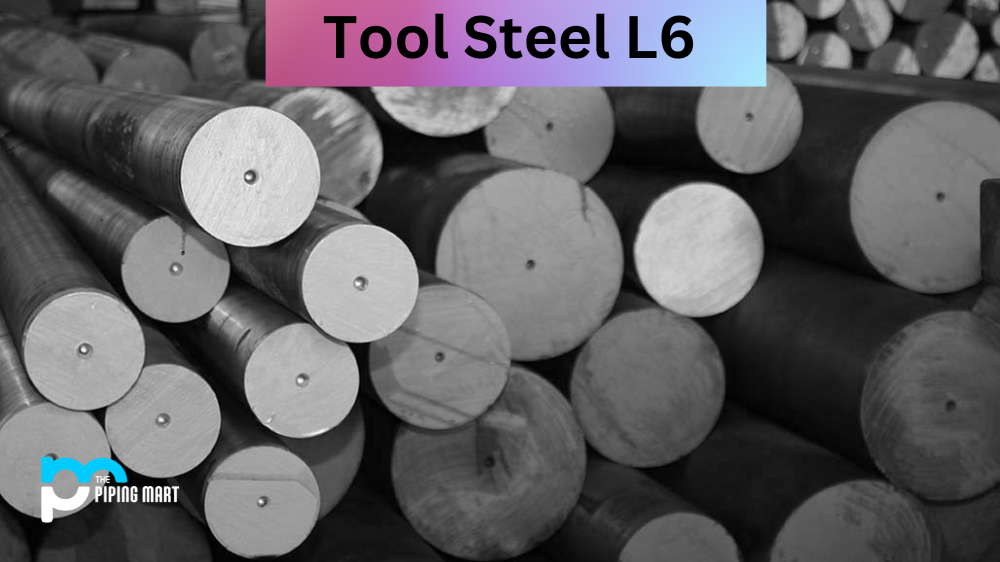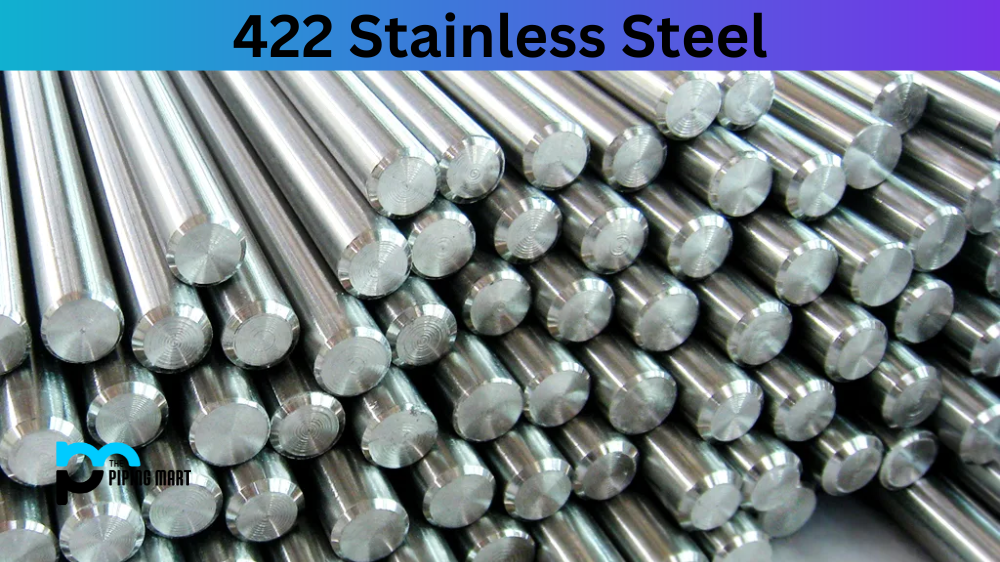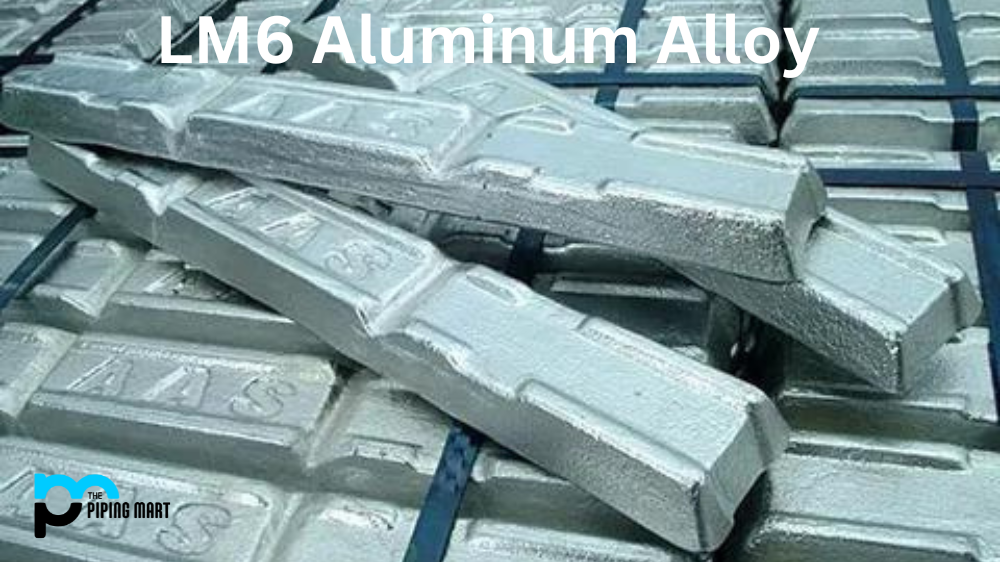Tool Steel L6 is a high-carbon, low-alloy tool steel that has been used for centuries in manufacturing. It’s known for its superior strength, wear resistance, and heat treatment properties. AISI L6 Tool Steel is a type of steel commonly used in manufacturing heavy-duty equipment and machinery. Known for its impressive strength and hardness, L6 Tool Steel is composed of a unique blend of elements, including chromium, vanadium, and tungsten. In addition to its exceptional toughness and wear resistance, this steel is also known for its superior machinability, making it a popular choice for various industrial applications. Its properties make it an ideal candidate for various tools and components, such as dies, punches, shear blades, machine parts, and structural elements. With its strength, durability, and versatility, AISI L6 Tool Steel is essential for many manufacturing industries. But what exactly is L6 Tool Steel, and how is it used? Let’s take a closer look at this versatile material.
What is Tool Steel L6?
Tool Steel L6 is a type of chromium-molybdenum alloy steel that is ideal for applications where high strength and good wear resistance are required. The material has excellent machinability characteristics and can be hardened to a Rockwell C 58–60 hardness rating after heat treatment. It also has exceptional corrosion resistance, which makes it ideal for use in wet environments or areas exposed to harsh chemicals.
What Forms of L6 Tool Steel is Available at Piping Mart?
- Nut
- Bar
- Bolt
- Pipe
- Screw
- Tubing
- Valves
- Washers
- Flanges
- Fasteners
- Electrodes
- Stud Bolts
- Sheet Plates
- Pipe Fittings
- Forged Fitting
- Instrumentation Fittings
L6 Tool Steel Composition
| Element | Content (%) |
|---|---|
| Nickel, Ni | 1.25-2.00 |
| Chromium, Cr | 0.60-1.20 |
| Carbon, C | 0.65-0.75 |
| Silicon, Si | 0.5 |
| Molybdenum, Mo | 0.5 |
| Manganese, Mn | 0.25-0.80 |
| Vanadium, V | 0.20-0.30 (a) |
| Copper, Cu | 0.25 |
| Phosphorus, P | 0.03 |
| Sulfur, S | 0.03 |
| Iron, Fe | Balance |
L6 Tool Steel Physical Properties
| Properties | Metric | Imperial |
|---|---|---|
| Density | 7.86 g/cm³ | 0.284 lb/in³ |
| Melting point | 2590°F | 1421°C |
L6 Tool Steel Mechanical properties
| Properties | Metric | Imperial |
|---|---|---|
| Poisson’s ratio | 0.27- 0.30 | 0.27- 0.30 |
| Elastic modulus | 190-210 GPa | 27557-30457 ksi |
L6 Tool Steel Equivalent
- UNS T61206
- ASTM A681
- DIN 1.2713
- SAE J437
- SAE J438
L6 Tool Steel Uses
Tool Steel L6 is most commonly used in the production of cutting tools such as drills, reamers, taps, dies, punches, and other metalworking tools, as well as surgical tools like scalpels and knives. It’s also frequently used to make gears for heavy machinery due to its superior strength and durability compared to other materials. Finally, it’s often used in the aerospace industry for parts that must resist extreme temperatures or pressure changes.
L6 Tool Steel Uses in Industries
Automotive Industry
L6 tool steel is commonly used in the automotive industry for various applications such as crankshafts, gears, and axles. Its high strength and wear resistance make it ideal for these critical components subjected to heavy loads and friction.
Aerospace Industry
In the aerospace industry, L6 tool steel is used for manufacturing aircraft landing gear components, engine parts, and other critical structures. Its ability to maintain its strength at high temperatures makes it suitable for these demanding applications.
Manufacturing Industry
L6 tool steel is also extensively used in manufacturing for various machine parts such as shafts, spindles, and gears. Its high hardness and wear resistance ensure long-lasting performance in machines that operate under heavy loads and harsh conditions.
Oil and Gas Industry
Due to its high toughness and abrasion resistance, the oil and gas industry relies on L6 tool steel for drilling tools such as drill bits. It can withstand the extreme pressures and temperatures encountered during drilling operations without losing its cutting edge.
Construction Industry
Due to its exceptional strength and durability in construction, L6 tool steel is used to make heavy-duty equipment such as bulldozers, cranes, and excavators. It can withstand the rigours of construction work while maintaining its structural integrity over time.
L6 Tool Steel Heat Treatment & Machining
Tool Steel L6 can be heat treated by austenitizing it at 1600–1650°F (871–899°C) followed by quenching in oil or air cooling, then tempered at 400–1200°F (204–649°C). This process will result in an overall hardness range of 55–62 HRC with maximum toughness achieved when the tempering temperature ranges from 600–800°F (316–427°C). As far as machining goes, this material can be machined using conventional methods like drilling and tapping but should always be done with a coolant to reduce cutting temperatures as much as possible.
Conclusion:
Tool Steel L6 is an incredibly versatile material with countless uses across many industries—from automotive manufacturing to aerospace engineering. Its superior strength and durability make it an ideal choice for applications where high performance is needed without sacrificing quality or reliability. For best results when working with this material, proper heat treatment should always be followed by machining using coolants to minimize cutting temperatures. With proper care and attention paid to the details of the fabrication process, you can ensure that your project will turn out just the way you want it!

Abhishek is a seasoned blogger and industry expert, sharing his insights and knowledge on various topics. With his research, Abhishek offers valuable insights and tips for professionals and enthusiasts. Follow him for expert advice on the latest trends and developments in the metal industry.




